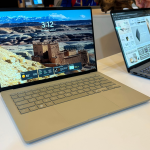Getty Images
- Eye disease affects an aging population.
- The ophthalmic-device company BVI addresses a market gap: listening to customers and focusing on the customer experience.
- CEO Shervin Korangy explains how the company continues to innovate.
When Beaver knives first launched into surgical applications in 1932, its patient-focused approach to innovation was already novel. Now, nearly a century later, BVI has taken its expertise and expanded to become one of the fastest-growing diversified surgical ophthalmic businesses in the world, with a presence in more than 100 countries and products and technologies that span a variety of ophthalmic therapeutic areas.
And they’ve done it by focusing on one thing, says CEO Shervin Korangy: “We developed a strategy around a simple concept – delivering what our surgeons and patients have been telling us they need.”
While Korangy might call it simple, BVI’s ability to consistently develop new products across the category, as well as add innovative companies and technologies to its portfolio, is setting it up to take on some of the major players in the industry, all while remaining nimble enough to adapt to an ever-changing healthcare landscape. Here’s how the company does it:
Treating eye diseases
While the majority of BVI’s business focuses on cataracts, its most recent product launches and a strong pipeline provide the opportunity to address additional eye diseases, including vitreoretinal diseases and glaucoma. New innovations like CryoTreq – the first single-use handheld cryo-surgery device, which can revolutionize the cryo-treatment of retinal tears and detachments – have established BVI as a leader in categories across the ophthalmologic spectrum.
The company also empowers its associates to make decisions and fix problems, avoiding the bureaucratic red tape that can sometimes weigh institutions down and impede their ability to respond to issues as they arise.
“As a company that has grown so quickly – naturally we have growing pains,” Korangy says. “We can cope with that because we turn to our employees and say, ‘OK, so tell us how you want to fix it.’ For our teams, that’s refreshing because they see a problem and are helping build the future state of our business. This surprises new hires sometimes because they expect me to have the answer. And my answer is, ‘You are going to tell us the solution.'” By encouraging its teams to act swiftly and make informed decisions, the company is able to run more efficiently.
BVI’s flexibility doesn’t apply only to its business and technology but also to how it can best serve its patients. It acquired Physiol, which invented the trifocal intraocular lens (IOL) category some nine years ago. Patients were seeking spectacle independence but needed more than just near and distant vision. Trifocality was a completely novel concept.
Innovating at every level
Equipment and technological innovations like its ophthalmic endoscope and Malosa, its line of single-use surgical tools, have made BVI one of the most-watched companies in the industry, but Korangy says that its entrepreneurial thinking isn’t limited to products. “We look at our supply chain, our go-to-market strategy, and our manufacturing facilities for ways to innovate as well,” he says.
Having a comprehensive understanding of the segments the company wants to enter is also essential to its growth plan. The company talks about ensuring its future is de-risked. BVI seeks to do this when entering an adjacency by finding partners that have proven product development capabilities in the relevant categories or by working very closely with doctors or clinicians to develop products. By doing this, BVI can reduce its exposure to basic scientific-development roadblocks.
Planning for the future
Populations are living longer, giving rise to more cases of eye disease and vision defects that often affect an aging population. In 2016, 49 million US adults were 65 or older, representing 15% of the population. That number is expected to reach 71 million by 2030 and 98 million by 2060 – when that age cohort will make up nearly 25% of the population.
“That demographic trend is incredibly powerful for our industry because the biggest correlation to the prevalence of eye disease is age,” Korangy says. This increase creates an additional opportunity for BVI to expand market share at a pivotal time when health and wellness are key considerations for aging patients.
Right now the company is focused on building a platform that can scale across the entire therapeutic spectrum in ophthalmology, which Korangy says will continue to be the case in the years to come: “Our team knows that a well-conceived strategy takes more time up-front but then can’t be changed too often so that we can execute it well.”
Above everything else, though, is keeping customer needs front and center.
“Growth can only happen with a focus on the customer and patients,” Korangy says. “It is amazing the impact our products have on the quality of life of the patients who receive treatment. So if we stay focused on listening to our customers and delivering for our patients, then the business should continue to flourish.”
Learn more about how BVI continues to innovate for eye health here.
This post was created by Insider Studios with BVI.
Powered by WPeMatico





